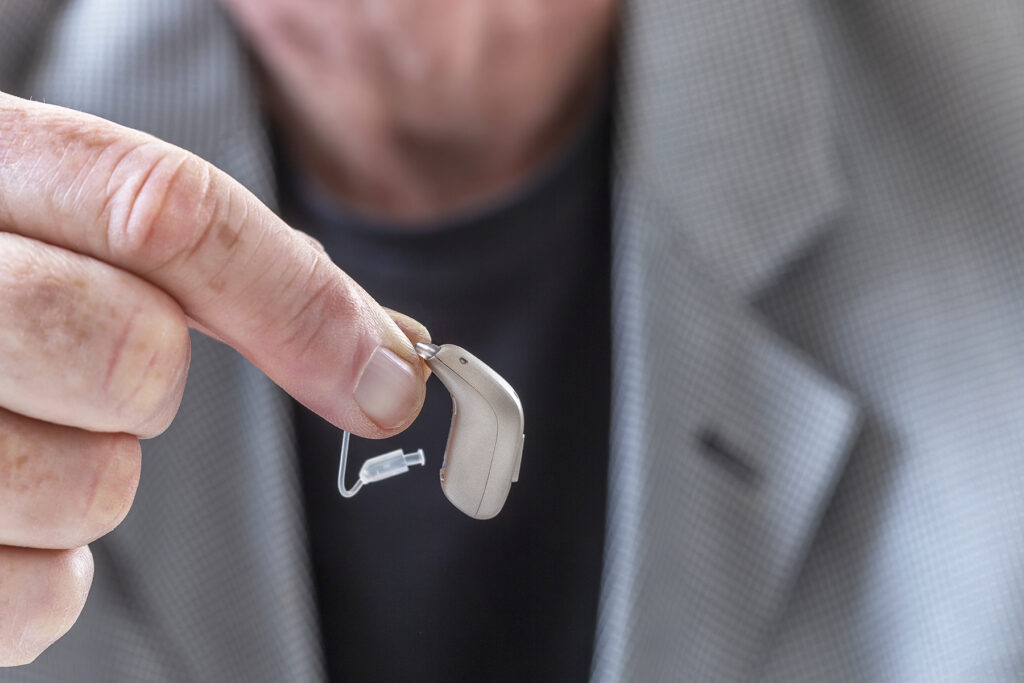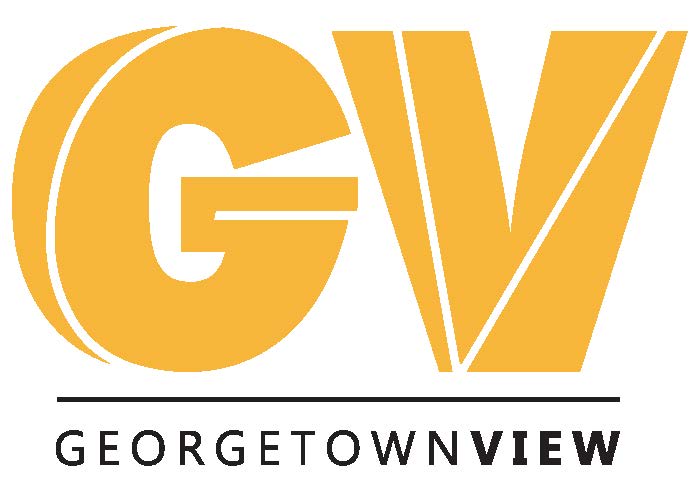contributed by Steve Fought
Hearing Aids
I was a military pilot. During missions, I usually had three to five radios going in my headset at the same time to maintain what pilots call situational awareness. The radio chatter informed me about what was happening in my formation, in and around the general airspace, on the ground, at mission control, and even in my own aircraft (intercom). I had to pay attention to all of them, but be attuned to, and respond to, any one of them at different times, depending on the situation. That meant I had to filter the sounds, and differentiate between and among the sources. It’s an acquired skill.
Situational Awareness Today
Okay — fast forward to 20 years after I retired, to social settings where a dozen or so were talking at the same time. I could hear all the voices, get most of the words, but couldn’t differentiate. Gina, in her ever-so gentle but pointed phrasing, told me I was “answering questions that were not posed.”
I got the message. It was time to do something about my hearing.
After getting a referral through my primary care doctor, I made an appointment in Audiology. The check was comprehensive beyond anything I had experienced in the military. In the end the data indicated I needed a hearing aid in my left ear, and would likely need one in the right ear in a year or two.
Being an adult male, and a pilot to boot, I figured as long as I had one good ear, things were fine. Gina wasn’t having it, so we ordered the left-side hearing aid. It was expensive, but fortunately our insurance covered part of the costs. I still had a substantial co-pay, and wouldn’t be eligible for a replacement for something like four years.
The First Fit: A Game-Changer
The hearing aid arrived in about a week and the results were immediate and stunning. I could now differentiate between individuals’ voices and understand their words, even when they were at a relatively low volume as compared to the ambient noise. There was a noticeable difference in my hearing in the left ear (with the hearing aid) and the hearing in my right ear. Now I wanted two of them…but I didn’t qualify (yet).
Next came the hearing aid app for my iPhone. Amazing. The app appeared to be mostly for making adjustments to the device, such as changing the volume, or increasing/reducing bass and treble sounds. It’s like a sound-mixing device in a recording studio. It also had settings that changed the sound filters to different environments — normal, outside, restaurant, and so forth. These seem to focus the microphone and dampen background noise.
The hearing aid and I bonded in about a week and I wondered why I hadn’t done this long ago. As we grew closer, I began to explore what else could be done, given the hearing aid was Bluetooth-enabled. What that means is that there is a lot to play with (good for an old pilot – keep flipping switches until something meaningful happens).
Tech Takes Off

First discovery: The hearing aid connects to iPhones. I can make and receive calls through my hearing aids.
Second discovery (and this is a biggie): I can connect to iTunes without any cords. This is great for the gym (no earbuds to lose), but most importantly for meetings when things get really boring. Simply touch a few buttons and I’m listening to George Straight, George Jones, or Reba McEntire rather than a dull speaker. Be careful with that last one, however. A colleague had to nudge me one day because I was moving my lips and swaying back and forth as I listened to “Amarillo by Morning” and it was becoming noticeable. Oops.
Affording the Fix: Navigating Insurance
Time passed and I eventually qualified (via insurance) for the second hearing aid. In the meantime I discovered similar hearing aids were available through discount houses (Costco, Sam’s, etc.) as well as through various Audiology vendors, at prices that were lower than going through the hospital and insurance.
I also discovered the hearing tests at the various places were quite comprehensive. Not as extensive as at the hospital, but all better than what I received in the military long ago. Finally, I was encouraged to send the test data to the VA. They re-tested and approved me for VA-funding for my next set.
Why You Shouldn’t Wait
My hearing aid journey has been a learning experience. First, I learned I should have done this long ago. Second, insurance can cover a large part of it, but at the same time these things are far more affordable now than a few years ago. Finally, the technology is awesome. I’m sharing this experience because I want anyone out there with a hearing issue to realize there are solutions within reach. Don’t wait, and don’t be shy. This new technology offers too much of an improvement in your daily life to not take advantage of it.
Go for it !
